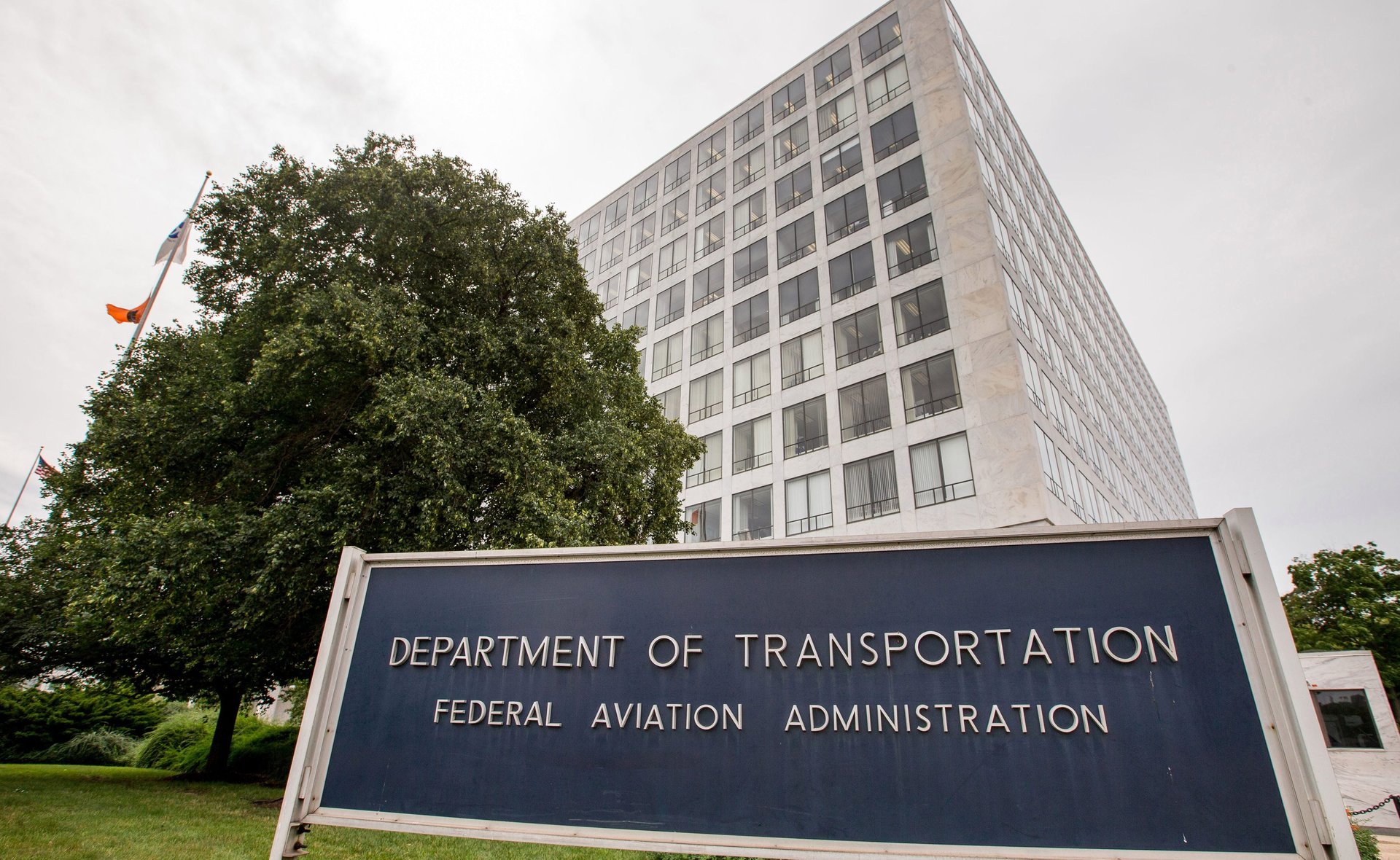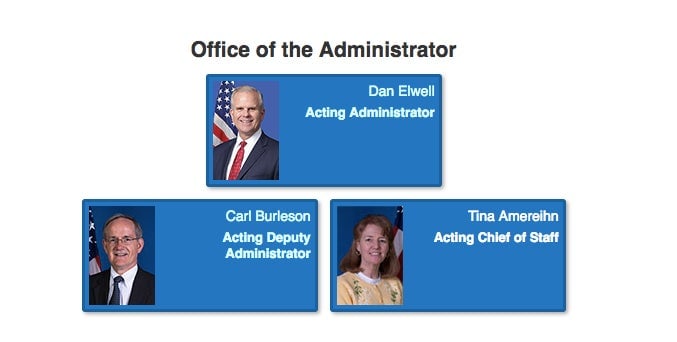Trump’s FAA is up against its most serious airline safety crisis yet
Updated March 13 at 9pm EDT with FAA statement.


Updated March 13 at 9pm EDT with FAA statement.
On Jan. 2, 2018, Donald Trump took credit for a record year for aviation safety in a characteristically braggadocious tweet:
Trump’s commercial aviation policies in 2017 included additional screening of passengers on international flights, but weren’t the driver of the “good news,” industry experts pointed out at the time. Instead, 2017’s results were part of a “steady and persistent decline” in aviation fatalities since 1997, says the Aviation Safety Network, a private initiative tracking air-safety incidents, thanks to the efforts of international flight safety groups and the industry itself.
A year later, that steady and persistent decline has stopped. Two new Boeing 737 Max planes have crashed in just five months, killing nearly 350 people, and shining a spotlight on the Federal Aviation Administration (FAA), the US regulator that sets the standard for airline safety around the world and certifies plane design at Boeing, the world’s largest manufacturer of jet planes.
The FAA insists the Boeing 737 Max is still safe to fly. But in an unusual move, dozens of nations have rejected the agency’s recommendation, and are grounding flights, including the entire European Union, home of the world’s other top airline regulator.
“At least temporarily, it is a vote of ‘no confidence’ in the [FAA],” said Paul Hudson, the president of FlyersRights, a passenger rights organization, and a member of the FAA’s Rulemaking Advisory Committee. When the Boeing 787 Dreamliner had a battery fire issue in 2013, the FAA “grounded that aircraft for a six weeks until Boeing came up with a fix for the problem,” Hudson points out. In another sign of lack of confidence, the Ethiopian Airlines will send flight 302’s flight recorder, or “black box” to Europe for analysis, not the US, the airline said.
Like many US federal agencies under Trump, the FAA isn’t operating under optimal conditions to deal with a big issue like the two Boeing crashes. It hasn’t had a permanent top official for 14 months, the White House pushed gutting its employees and trimming budgets for two years in a row, and the recent government shutdown delayed officials’ approval of safety upgrades.
Pressure on the Trump administration
As the world awaits the readout from Ethiopian Airlines black box, which is expected Friday, the FAA’s response and the role that it played in keeping Boeing’s 737s in the air are under scrutiny. After the Lion Air plane crash in October 2018, a Boeing software upgrade was expected in January, but the US’s 35-day government shutdown and disagreements between the FAA and the airplane manufacturer delayed it.
Now, the FAA should “immediately ground this plane in the United States until its safety can be assured,” said Elizabeth Warren, the Democratic Massachusetts senator, echoing other members of Congress on March 12. Airline unions have told members they don’t have to fly on the Boeing 737 if they feel unsafe. Former Department of Transportation secretary head Ray LaHood, who oversaw the 787 issues in 2013, and Jim Hall, former head of the National Transportation Safety Board, which investigates airline accidents, both say it is time to ground the plane.
Trump himself seemed to think so Tuesday (March 12), tweeting that planes had “become too complex to fly.” Later the same day, Boeing CEO Dennis Muilenburg and Trump spoke on the phone, and Muilenburg reassured Trump the aircraft was safe, the company told reporters. Muilenburg’s reassurance is something that past presidents might have looked to the FAA to do.
The FAA plays such an important role in the global aviation industry, thanks in part to the fact that for decades the US aviation industry carried the most commercial passengers of any country, as World Bank data shows. Flying in and out of the US means meeting FAA specifications, and being a successful global airline, no matter where you are based, meant having US stops. Even now, US citizens make about 19% of total global passenger journeys. There’s no guarantee the FAA will play the same role in the future, as most of the projected growth in passengers is coming from Asia-Pacific.
If the US permanently “loses its reputation for aviation safety, that’s a much bigger deal than this particular issue over this particular plane,” said Hudson of FlyersRights. In a worst-case scenario, if the world were to say “we can’t trust the FAA anymore,” airlines and manufacturers could be forced to rely on an international body like the UN to provide trusted safety certification.
The FAA under Trump
Days after Trump’s January 2018 tweet taking credit for 2017 safety records, Michael Huerta, the FAA’s top official announced he was stepping down. That wasn’t unexpected: The FAA’s top job is politically appointed, yet purposely set to a five-year term, to make sure there’s overlap enough for a new president to find a replacement for the critical safety regulator.
But the Trump administration didn’t have a serious contender to take Huerta’s place waiting in the wings. Instead, the White House floated the idea of Trump’s personal pilot since 1989, John Dunkin, to head the $17.5 billion budget, 45,000-person agency; Congress members pushed back, suggesting his lack of appropriate experience meant he’d never be confirmed.
Since then, the job has been filled on an acting basis by Trump’s deputy administrator pick, Dan Elwell, a former Air Force pilot, American Airlines executive, and lobbyist for the airline industry. Because Elwell, the deputy administrator, is acting as top administrator, Carl Burleson, the Deputy Assistant Administrator for Policy, International Affairs, and Environment, is serving as the “acting” deputy administrator, while Burleson’s former deputy is doing his old job; ditto with the Chief of Staff Tina Amereihn, who was originally head of finance. In other words, the FAA’s top three positions are all held by officials in an acting capacity.

The FAA isn’t alone. Under Trump, there are numerous US agencies now in a similar sort of limbo, awaiting permanent appointments for top officials and crucial deputies, from the Department of Defense (whose acting secretary is a former Boeing executive) and the Interior (Trump nominated a permanent secretary March 8, but he hasn’t been confirmed). Trump told reporters in January the structure gives him more “flexibility,” critics say it centralizes power in the Oval Office, and weakens these agencies.
“When you have interim or acting people for a long period of time, that puts everyone else in an interim role in that chain of command,” James Norton, founder of consultant Play-Action Strategies, which advises companies on getting federal contracts, and a former Department of Homeland Security official. That affects how quickly things are accomplished, how thoroughly they are reviewed, and when decisions are made. “We’re in year three” of the Trump administration, he noted. “That’s a long time not to have the FAA” permanent management in place.
In response to questions about staffing levels and any impact the shutdown may have had on safety upgrades, an FAA spokesman told Quartz “The FAA is under the strong leadership of Dan Elwell who has served as a military and airline pilot as well as in a variety of industry leadership positions.”
Trump had tangles with the airline regulator before he took office; the FAA grounded his personal Cessna jet during the 2016 presidential campaign for flying with an expired registration and he filed a $100 million lawsuit in 2015 alleging the FAA had been told to reroute traffic over his Palm Beach, Florida club Mar-a-Lago.
As president, all of Trump’s proposed budgets, including the most recent released yesterday (March 11) suggest cutting hundreds of millions from the agency’s annual budget, a signal of the White House’s priorities that Congress ignored. For the first two years of his presidency, the Trump White House pushed a plan to privatize air traffic control, a key FAA task, which would have eliminated about 60% of its employees. The idea lost support in Congress, and is not mentioned in the new budget.
Two days before the Ethiopian Airlines crash, Reuters reported Trump would nominate a Delta Air Lines veteran for the top FAA job, but no nomination has been forthcoming. Neither the Department of Transportation, which oversees the FAA, or the White House, responded to questions.